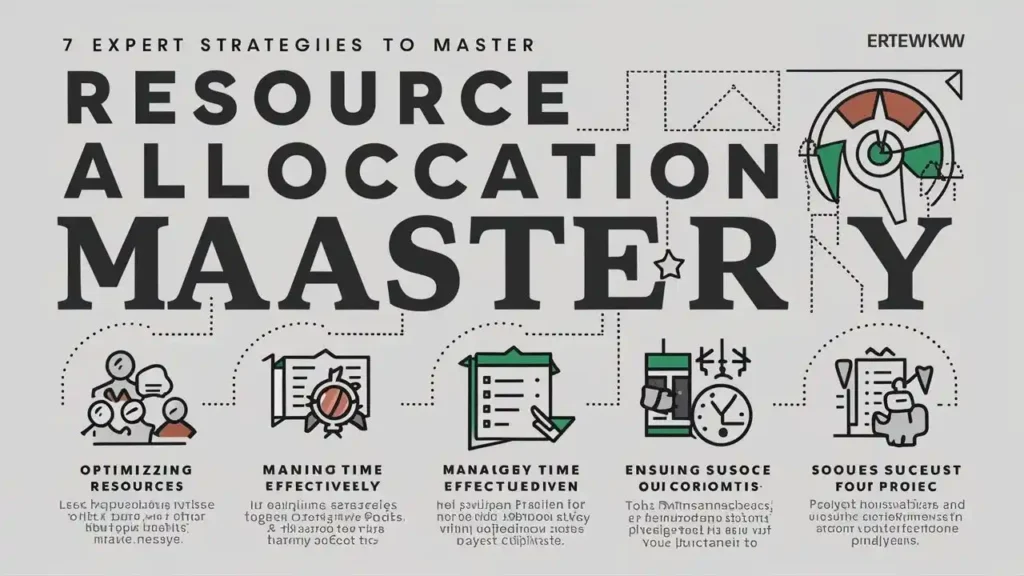Introduction
Here’s a sobering stat: 73% of companies cite poor resource allocation as their top productivity killer, according to Gartner. For project management leaders with 8-30 years of experience, this isn’t news—it’s a daily battle. Stretch your team too thin, and burnout spikes. Overload one project, and others limp along. So how do you crack the resource allocation puzzle without breaking your people or your deadlines?
This blog is your playbook. We’ll dive into 7 expert strategies to master resource allocation, unpack the tools that streamline the process, and share real-world wins from organizations that nailed it. Tailored for seasoned PMs, this guide will help you balance capacity and demand, prioritize like a pro, and keep your teams thriving.
Quick Actionable Tip: Next week, audit your team’s workload—spot one overcommitted area and rebalance it for instant impact.
What Makes Resource Allocation So Tricky?
Defining Resource Allocation
At its core, resource is assigning people, budgets, and tools to projects based on:
- Capacity: What you’ve got (e.g., 10 developers, $50K).
- Demand: What’s needed (e.g., new features, bug fixes).
Example: A PM must split five designers between a website overhaul and a product launch—get it wrong, and both suffer.
The Hidden Challenges
Why is resource allocation harder than it looks?
- Competing Priorities: Sales demands a CRM update while ops needs a warehouse tool.
- Shifting Timelines: A delay in testing throws everything off.
- Skill Silos: Your data analyst can’t pitch in on UI design.
Pro Tip: Treat resource as a living process—review it biweekly to stay agile.
Core Principles of Effective Resource Allocation
Prioritization Frameworks
Not every project deserves equal resources. Use these tools:
- ICE Scoring: Rank by Impact, Confidence, Effort.
- MoSCoW Method: Sort into Must, Should, Could, Won’t.
Example: A PM used MoSCoW to cut “Could-Have” tasks, freeing 20% of team capacity for a critical release.
Capacity vs. Demand Mastery
Balance what you have against what’s asked:
- Capacity Planning: Tally available hours or FTEs.
- Demand Forecasting: Estimate effort per project.
Tip: Visualize this in Smartsheet—overlaps scream “rebalance now.”
7 Expert Strategies to Master Resource Allocation
Leverage the 80/20 Rule
The Pareto Principle says 80% of value comes from 20% of work. Apply it:
- Focus 80% of resources on high-ROI projects.
- Reserve 20% for innovation or firefighting.
Example: Google’s 20% time birthed Gmail—proof small bets pay off.
Cross-Train for Flexibility
Skill silos bottleneck resource allocation. Build adaptability:
- Create skill matrices to track capabilities.
- Rotate staff across roles for exposure.
Pro Tip: A cross-trained team shaved 15% off a deadline by shifting seamlessly mid-project.
Use Data-Driven Forecasting
Gut guesses fail. Base resource allocation on:
- Historical project data (e.g., hours per task type).
- Upcoming pipeline forecasts.
Insight: Data cut a firm’s over-allocation by 25% in six months.
Build Resource Buffers
Unexpected delays happen. Plan for them:
- Keep 10-15% capacity uncommitted.
- Budget extra for overtime or contractors.
Example: A PM with a 10% buffer weathered a vendor dropout without missing a beat.
Automate with Tools
Manual tracking wastes time. Use:
- Jira: Track tasks and workloads.
- Monday.com: Visualize capacity vs. demand.
Tip: Automate reports—fewer spreadsheets, more decisions.
Revisit Priorities Quarterly
Static plans can quickly become outdated, especially in dynamic business environments. To stay on track, it’s essential to reassess resource allocation regularly. One effective approach is to score projects anew each quarter, allowing you to prioritize initiatives based on current needs and objectives. This process involves shifting resources to align with shifting goals, ensuring that your efforts remain focused on the most critical tasks.
By adopting this quarterly reassessment strategy, organizations can maintain agility and adaptability in the face of changing circumstances. For instance, a retailer I worked with faced significant challenges during a supply chain crunch. However, by implementing quarterly pivots in their resource allocation, they were able to adjust their priorities and maintain operational efficiency. Regularly reassessing and adjusting resource allocation can be a powerful tool for maintaining strategic focus and driving business resilience.
Foster Team Input
Your team knows their limits. Tap them:
- Run capacity check-ins monthly.
- Let them flag overload early.
Pro Tip: Team feedback caught a burnout risk, saving a $500K project from collapse.
Case Study—A Tech Firm’s Resource Turnaround
A SaaS company faced chronic delays—engineers juggled too many priorities, and morale tanked. Their PM overhauled resource allocation:
- Quarterly Reviews: Updated capacity vs. demand.
- ICE Scoring: Shifted focus to high-impact features.
- Cross-Training: Built a flexible dev pool.
The Result: Delivery sped up 20%, employee satisfaction rose 15%, and churn dropped.
Takeaway: Smart resource allocation isn’t just efficient—it’s transformative.
Conclusion
Mastering resource allocation is an art and a science—blend ruthless prioritization, data-driven planning, and team flexibility to win. These 7 expert strategies give you the edge:
- Focus on what matters with the 80/20 rule.
- Build resilience with cross-training and buffers.
- Stay dynamic with tools and quarterly resets.
Next Step: Schedule a resource audit this month—map capacity, score priorities, and tweak one overload. Small shifts now yield big wins later. You’ve led through chaos—now lead with balance.
Optimize your project efficiency with effective strategies for resource allocation in project management.








